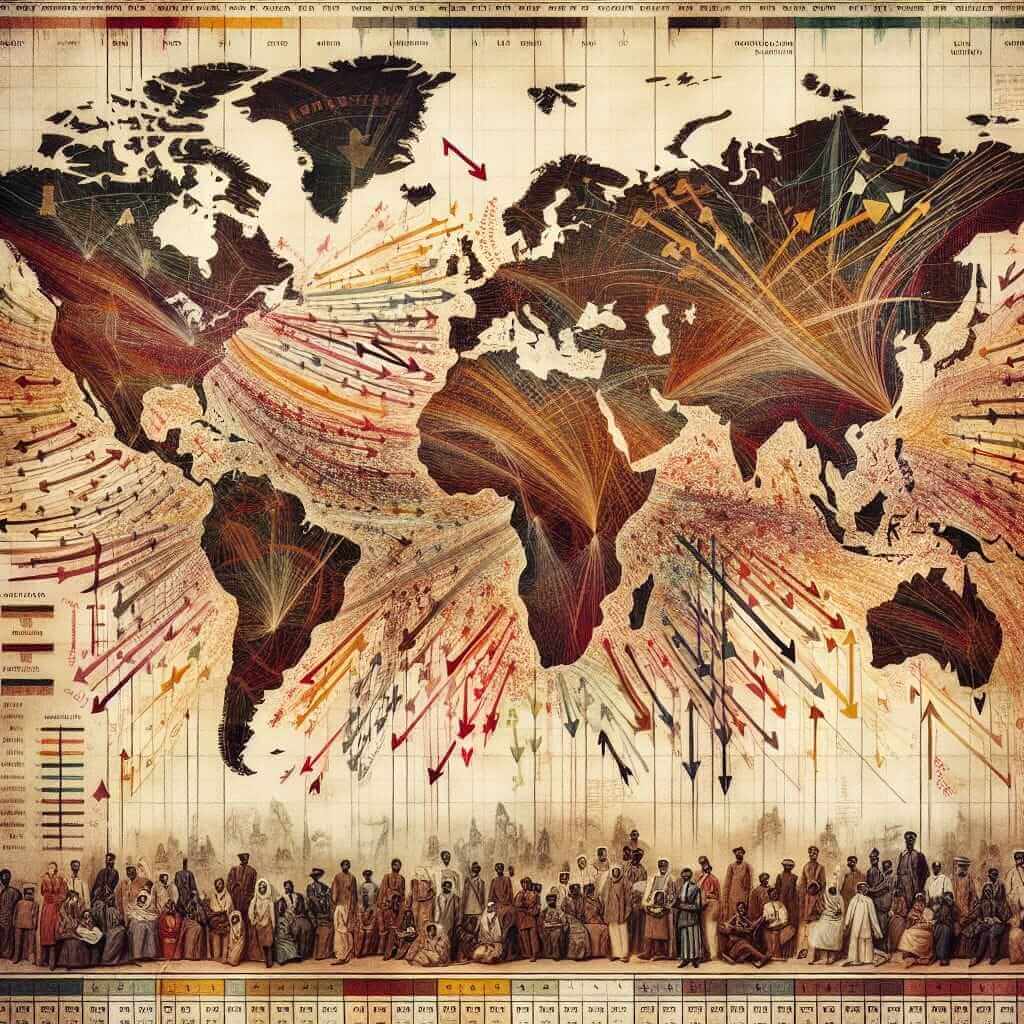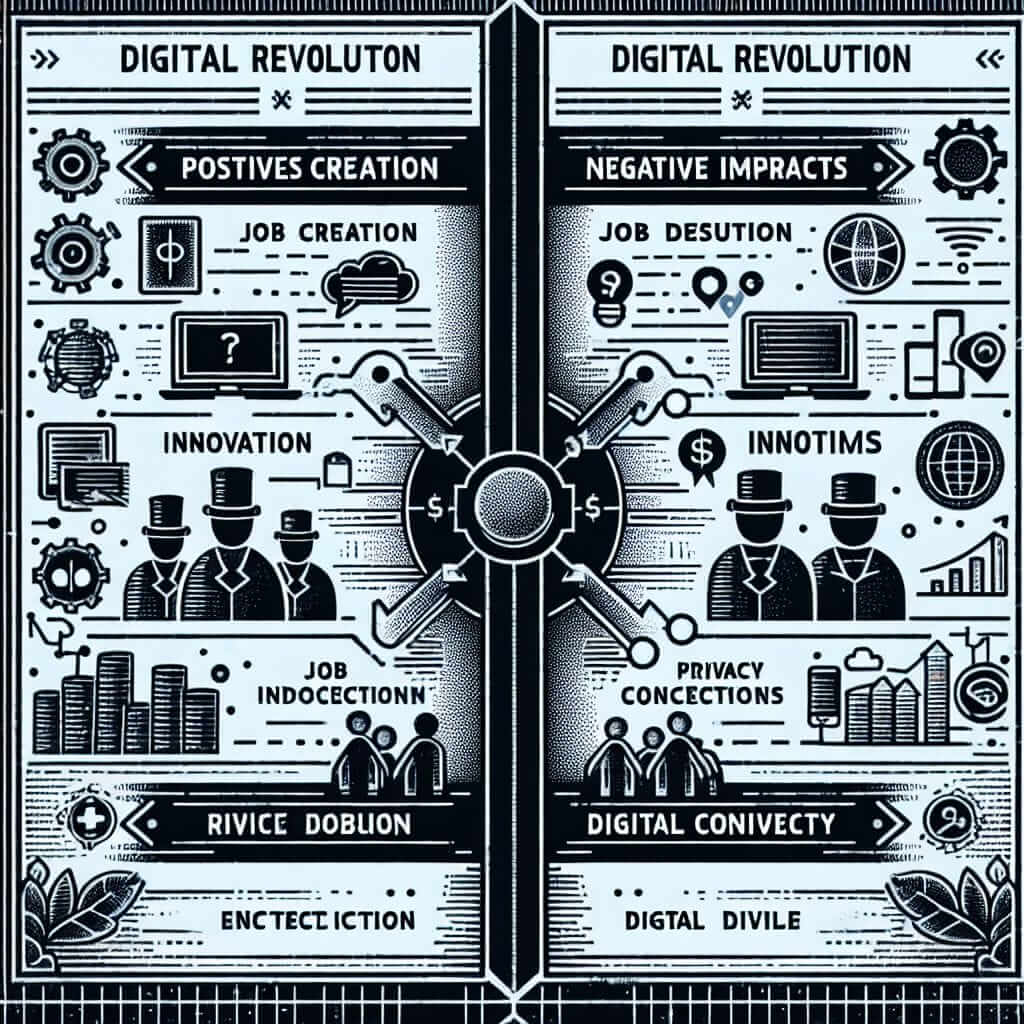The IELTS Reading section can be challenging, but mastering it is crucial for achieving a high band score. One frequently recurring theme is “Historical Analysis of Global Migration Patterns.” This theme has appeared in various forms in IELTS examinations over the years. Given its relevance in comprehending human history and global development, it’s likely to surface again in future tests. This article dives into creating a reading practice test on this topic, aiming to provide comprehensive training for IELTS aspirants.
IELTS Reading Practice Test: Historical Analysis of Global Migration Patterns
Reading Passage
Below is a reading passage formatted according to the IELTS test standards. This passage is classified as a Medium Text, suitable for most IELTS aspirants.
Global migration has profoundly influenced the world’s socio-economic landscape throughout history. From the earliest human movements out of Africa to modern-day immigration patterns, the analysis of these trends offers invaluable insights into human development.
Early Human Movements
The earliest records indicate that Homo sapiens began migrating out of Africa approximately 70,000 years ago. This migration was driven by the search for food, better living conditions, and favorable climates. Archaeological evidence shows that these early humans moved through the Middle East into Europe, Asia, and eventually to Australia and the Americas. This period marked the foundation of the diverse cultures and societies we observe today.
The Age of Exploration
The Age of Exploration, roughly from the 15th to 17th centuries, witnessed unprecedented migration activities. European navigators and explorers, such as Christopher Columbus and Vasco da Gama, embarked on voyages that connected distant parts of the world. These expeditions were primarily fueled by the pursuit of trade routes, riches, and territorial expansion. Consequently, significant migration waves occurred, leading to the colonization of the Americas, Africa, and parts of Asia. This era fundamentally altered global demographics and trade dynamics.
Industrial Revolution and Modern Migration
The Industrial Revolution, beginning in the late 18th century, brought about another significant migration wave. Industrialized nations, particularly in Europe, attracted millions of workers seeking better employment opportunities. This period saw extensive rural-to-urban migration as people flocked to cities for factory jobs.
In contemporary times, migration patterns have evolved with globalization. Economic opportunities, political stability, and social networks heavily influence current migration trends. Countries like the United States, Canada, and Australia have become prime destinations for migrants due to their economic prospects and better living standards. However, issues such as immigration policies, border control, and refugee crises remain pressing concerns.
Migration remains a dynamic and complex phenomenon. Understanding its historical context is crucial for addressing present-day challenges and anticipating future trends.
Questions
1. Multiple Choice
-
What was the primary reason for early human migrations out of Africa?
- A. Searching for trade routes
- B. Better living conditions and climates
- C. Territorial expansion
- D. Employment opportunities
-
The Age of Exploration primarily focused on:
- A. Urban development
- B. Industrialization
- C. Trade routes and territorial expansion
- D. Political stability
2. Identifying Information (True/False/Not Given)
- The earliest human migrations began approximately 100,000 years ago.
- The colonization during the Age of Exploration significantly altered global demographics.
- Modern migration patterns are heavily influenced by political stability.
3. Sentence Completion
Complete the sentences below with NO MORE THAN THREE WORDS from the text.
- The __ marked the foundation of diverse cultures and societies.
- Economic opportunities in industrialized nations during the 18th century attracted __.
- Migration remains a __ phenomenon.
Answer Key
-
B. Better living conditions and climates
Explanation: The passage states that early human migrations out of Africa were driven by the search for food, better living conditions, and favorable climates.
-
C. Trade routes and territorial expansion
Explanation: The Age of Exploration was fueled by the pursuit of trade routes, riches, and territorial expansion.
-
False
Explanation: The passage states that the earliest human migrations began approximately 70,000 years ago, not 100,000 years ago.
-
True
Explanation: The passage indicates that the colonization during the Age of Exploration fundamentally altered global demographics and trade dynamics.
-
Not Given
Explanation: Although political stability is mentioned in relation to modern migration trends, there is no explicit information indicating its level of influence.
-
earliest human movements
Explanation: The passage mentions that the earliest human movements marked the foundation of the diverse cultures and societies observed today.
-
millions of workers
Explanation: Industrialized nations attracted millions of workers seeking better employment opportunities during the Industrial Revolution.
-
dynamic and complex
Explanation: The passage concludes by stating that migration remains a dynamic and complex phenomenon.
Common Mistakes and Tips
Common Mistakes:
-
Misinterpretation of Dates and Periods:
- Ensure to read the dates and historical periods carefully.
-
Not Understanding the Main Idea:
- Focus on understanding the main idea of each paragraph to answer questions accurately.
Tips:
-
Skimming and Scanning:
- Practice skimming for the main ideas and scanning for specific information to enhance reading speed and accuracy.
-
Familiarize With Different Question Types:
- Get accustomed to answering various types of questions to be more prepared.
Vocabulary
-
Archaeological (adjective) /ˌɑr·ki·əˈlɑdʒ·ɪ·kəl/: relating to the study of human history.
- Ex: The archaeological evidence suggests early human migrations.
-
Colonization (noun) /ˌkɑː.lə.naɪˈzeɪ.ʃən/: the act of establishing control over foreign lands and peoples.
- Ex: The Age of Exploration led to significant colonization.
Grammar Focus
Relative Clauses:
- Definition: A relative clause provides additional information about a noun.
- Example: “The Age of Exploration, which connected distant parts of the world, fundamentally altered global demographics.”
- Tip: Use relative clauses to add depth to your sentences, making your writing more varied and interesting.
Conclusion
To excel in the IELTS Reading section, consistent practice is key. By engaging with varied texts like the one provided above, you grasp different themes and learn to handle various question types. Remember, understanding the historical context of global migration patterns can offer invaluable insights, not just for exams but for broader knowledge.
For more practice materials on different topics, check out Should Endangered Language Be Preserved?.
 Historical global migration patterns
Historical global migration patterns
With dedication and structured practice, achieving a high band score in IELTS Reading is within your reach. Good luck!


